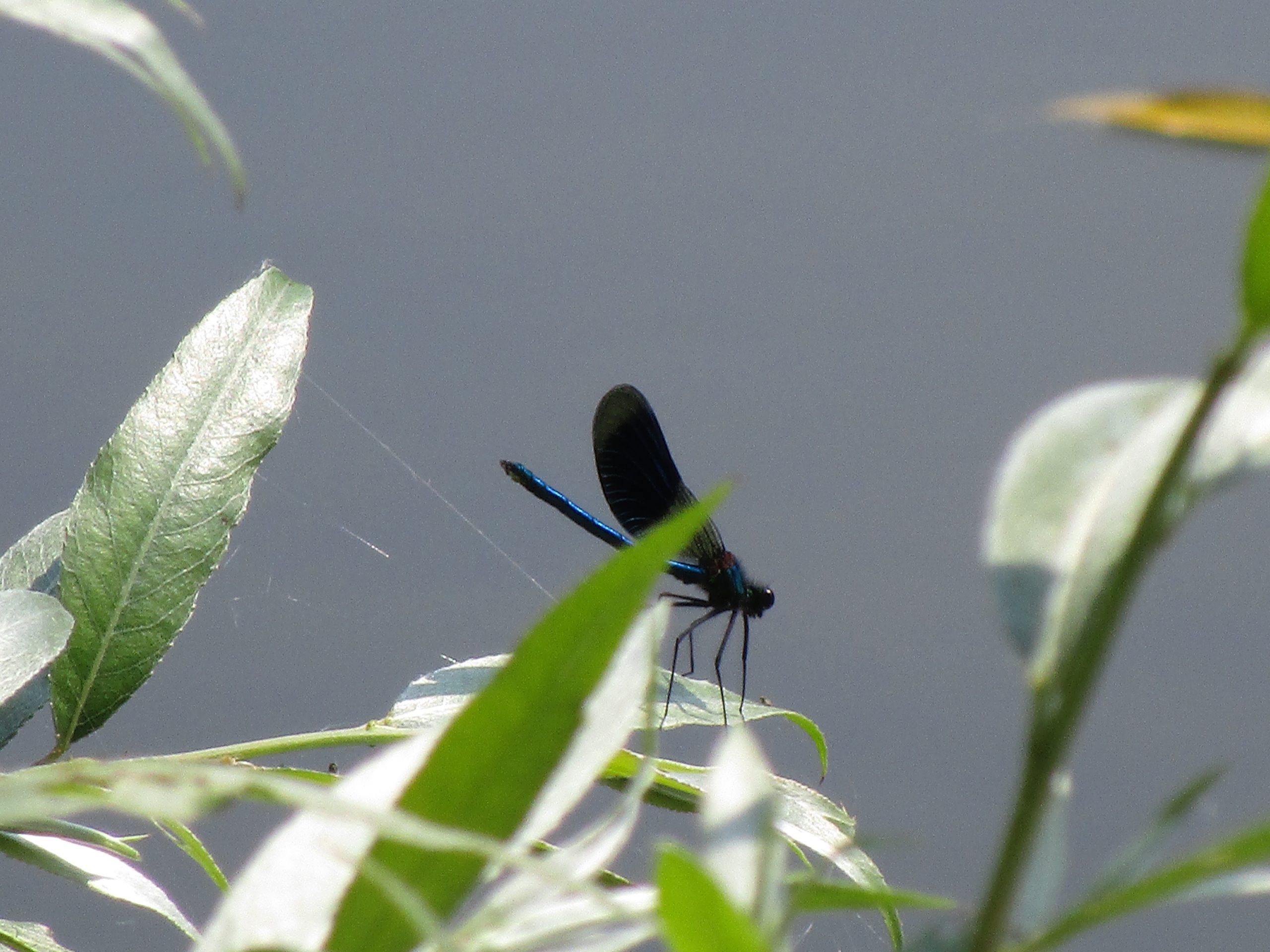As Kingfishers Catch Fire
By Gerard Manley HopkinsAs kingfishers catch fire, dragonflies draw flame;
As tumbled over rim in roundy wells
Stones ring; like each tucked string tells, each hung bell’s
Bow swung finds tongue to fling out broad its name;
Each mortal thing does one thing and the same:
Deals out that being indoors each one dwells;
Selves — goes itself; myself it speaks and spells,
Crying Whát I dó is me: for that I came.I say móre: the just man justices;
Keeps grace: thát keeps all his goings graces;
Acts in God’s eye what in God’s eye he is —
Chríst — for Christ plays in ten thousand places,
Lovely in limbs, and lovely in eyes not his
To the Father through the features of men’s faces.
“As Kingfishers Catch Fire” is one of my favorite Hopkins poems, and it seemed the perfect work to close out the month of April. Hopkins’s style carries with it the breath of spring. His form, sprung rhythm, is quick and strong; with alliteration and hard accents, the form acts a river tugging the reader downstream. The poems are rich and deep, like fresh turned soil, and Hopkins’s words become a grassy hill from which you can see for miles. Gerard Manley Hopkins notices the uniqueness in everything, and through his poetry, he invites the reader to come and look as well. In no poem is his philosophy of the uniqueness of being better expressed than in “As Kingfishers Catch Fire.”
Modeling Inscape
If ever you studied Gerard Manley Hopkins, most likely you came across his ideas of inscape and instress. By inscape, he meant the collective features of a thing–be it creature, plant, or landscape–that make it unique. My professor described it as the “thisness” of something, or the essence of it. What makes an oak tree an oak tree, and even more importantly, what makes this particular oak different from all other trees? In other words, inscape describes the individuality of creation, understanding each created thing as unique and valuable, with its own being and purpose.
Instress, however, describes the experience of recognizing inscape (cross-ref). It’s the act of truly seeing something. When you stand in your yard watching a bee at work and feel a pang of wonder that the bumbling, buzzing creature should be there, shining and tending the flowers; that he should be able to fly at all–that’s akin to what Hopkins might have felt when he wrote of instress.
“As Kingsfishers Catch Fire,” perfectly models inscape. In the first stanza, Hopkins describes how each thing on earth lives and cries out its being. Kingfishers catch fire as they streak across the sky; bells proclaim their names. Every living thing, however great or small, cannot help but live as itself, declaring itself. “Myself it speaks and spells,/ Crying What I do is me: for that I came.”
What is the purpose of the kingfisher, the dragonfly, the bell? They have only one purpose: to live as themselves. The kingfisher lives and flies and dives, and each of these actions contributes to his being. His being, in turn makes up why he came. He was created to do and to be that which he is.
Going Beyond Inscape
While “As Kingfishers Catch Fire,” models inscape, it also reaches beyond it in the second stanza. For in the second stanza, Hopkins shifts from describing the natural world to describing, “the just man.” Here he explains man’s being as more than just his own uniqueness. While nature glorifies God simply by being itself, man glorifies God by bearing His image. Creation lives as itself in order to testify of God’s goodness. The beauty of the flower, the strength of the eagle flying, the gentleness of the breeze all speak of the wonder of the Creator who gives to the world life and purpose and value.
The Purpose of Man
Man, too, is unique. God has created each person with unique gifts and traits so that no two people are alike. Even so, while we are given our own being, we are also gifted with a single unifying purpose: to become more like Christ. Unlike every other creature on earth, man reflects the image of God. When we come to Christ, we become vessels of His love, His truth, and His light. We carry His Holy Spirit with us, and so in our faces (when we live rightly), the face of Christ may be seen.
Just as Jesus came to reveal the Father through Himself, our purpose is now to reveal Christ through our lives. While all of creation declares, “What I do is me, for that I came,” we get to live out a different task. We instead declare, “What I do is Christ; by Him and for Him I came.”
“I have been crucified with Christ. It is no longer I who live, but Christ who lives in me. And the life I now live in the flesh I live by faith in the Son of God, who loved me and gave himself for me.”–Galatians 2:20 (ESV)
Christ has offered Himself for us and to us. His power rests in us through His Spirit, so that everything we do may be glorifying to Him. And when we use our unique gifts, when we lives as ourselves in Christ, we not only proclaim God’s glory with Creation, but we also build His kingdom. Our individuality is meant to be part of the whole of the body of Christ. God sees us, but in us, He also sees Christ.
And because of that, we are made perfect in Him.

Leave a Reply
You must be logged in to post a comment.